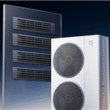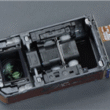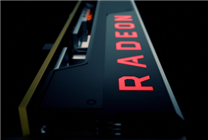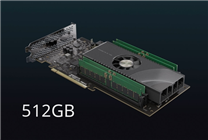Is Air Conditioning a Viable Heating Solution for Your Home?
Summary:
- Air conditioning can be a cost-effective heating option, especially in small rooms and milder climates.
- Energy efficiency drops significantly in low temperatures, but advancements in technology are improving heating performance.
- Proper insulation and usage strategies can enhance heating effectiveness and reduce electricity costs.
As winter approaches and temperatures drop, many families are reevaluating their heating options. In areas without centralized heating, particularly in the southern regions, air conditioning units often take on the role of winter heaters. However, users frequently grapple with electricity bills that can soar in the colder months. This leads to the crucial question: Is it practical to rely on air conditioning for heating purposes?
Understanding Air Conditioning Heating Efficiency
Air conditioning units are inherently more energy-consuming for heating compared to cooling, primarily due to the laws of energy conversion and the temperature differentials involved. While theoretically, the Coefficient of Performance (COP) for heating might be slightly higher than for cooling, practical usage tells a different story. During winter, the difference between indoor and outdoor temperatures often exceeds 20°C, leading to increased energy demand.
When outdoor temperatures plummet to -5°C and indoor heating needs rise to 20°C, the resulting temperature difference of 25°C can cause the energy efficiency ratio of standard air conditioners to dip below 2.0. In contrast, during the summer, a more manageable 9°C differential allows efficiency ratios to soar to between 3.0 and 4.5.
The Impact of Low Temperatures
Frost accumulation on external units during frigid weather can consume an additional 15% to 20% of total heating power. The need for frequent defrost cycles not only escalates energy consumption but also results in fluctuations in the indoor temperature. When outdoor temperatures fall below 0°C, electric auxiliary heating functions often kick in, significantly increasing power usage. For instance, a typical 1.5-horsepower air conditioner may see its electrical demand jump from 1200W to approximately 3000W, with auxiliary heating potentially contributing to 40% of total electricity costs. This can lead to winter bills that are 2-3 times higher than those seen in summer.
Evaluating Cost-Effectiveness
The decision to use air conditioning for winter heating involves several variables, notably regional characteristics and specific usage scenarios. In northern regions benefiting from centralized heating, costs for a 100-square-meter household can be a mere 3,000 yuan for an entire heating season. This is substantially lower than alternative electric heating solutions (6,912 yuan) and natural gas heating (5,431 yuan).
Conversely, for smaller households in the south, the initial cost benefits of air conditioning are significant. The upfront installation cost for a central air conditioning system hovers around 10,000 yuan, with monthly electricity fees of approximately 500 yuan—considerably lower than the 1,200 yuan typically spent on radiator systems.
In the Central Plains, newer heat pumps have been observed reducing electricity costs to between 1,800 and 2,100 yuan over five heating seasons for a 115-square-meter home, which is only about half the expense of traditional coal heating.
While modern air conditioning units show improved cost-effectiveness in well-insulated homes, older constructions may lack the thermal efficiency needed to offset high energy losses, diminishing their advantages in prolonged use.
Enhancements in Air Conditioning Technology
Traditional heat pumps face issues such as decreased refrigerant flow and high exhaust temperatures in extremely low conditions. However, compressors with advanced jet enthalpy technology maintain efficient performance even at temperatures as low as -15°C.
When it comes to heating smaller spaces, the cost-effectiveness of air conditioning units becomes especially prominent. A 1.5-horsepower unit adequately warms a 20-square-meter room with a much lower initial investment than floor heating or radiator systems. Based on usage of roughly eight hours daily at an electricity rate of 0.5 yuan per kWh, monthly electricity expenses can range from 240 to 300 yuan, outperforming many alternatives.
Noise Control and Comfort Issues
Recent advancements in design have successfully addressed longstanding noise concerns associated with air conditioning heating. Modern units utilize dual-stage shock absorption technologies to maintain noise levels around 54dB(A), akin to soft conversation, even in freezing temperatures. Indoor units typically generate less than 30dB(A), ensuring that daily activities or rest remain undisturbed.
However, while air conditioning for heating has been criticized for comfort issues such as "hot head and cool feet," this can be mitigated through smart design choices. Opting for down-air distribution models and utilizing humidifiers can help achieve a comfortable indoor humidity range of 40%-60%. With a rapid heating response time—often achieving set temperatures within 15-20 minutes—air conditioning’s advantages also shine in terms of efficiency.
Conclusion
With ongoing advancements in technology and strategic usage, air conditioning can serve as a viable and cost-effective heating option for small spaces in winter. Its unique versatility, rapid heating capabilities, and flexible installation methods make it well-suited for transient living situations or homes on a tight budget.
For mild climates where winter lows rarely drop below -5°C, the latest air conditioning models can effectively replace traditional heating methods. In harsher conditions, these units can remain the primary source of heating, with supplementary systems engaged only during extreme cold spells.
Ultimately, when choosing an air conditioning system, prioritizing models equipped with jet enthalpy technology, and enhancing home insulation, can elevate energy efficiency while maximizing the benefits of modern heating solutions. Proper sealing of doors and windows, along with improved wall insulation, can boost heating efficiency by over 30%, often yielding greater savings than opting for high-capacity models.








